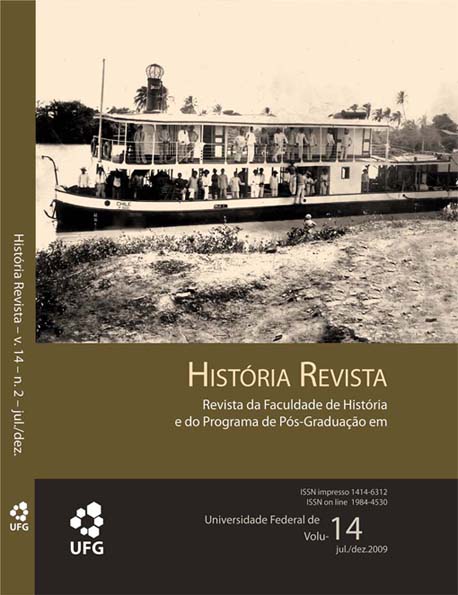O RIO LONGÁ E O POVOAMENTO DO NORTE DO PIAUÍ
DOI :
https://doi.org/10.5216/hr.v14i2.9557Résumé
A bacia do rio Longá representou importante fator de povoamento do norte do Piauí, em face dos recursos ambientais que apresenta, tanto em relação à disponibilidade de águas subterrâneas e superficiais, como na biodiversidade caracterizada por rica flora e fauna onde se destacam espécies vegetais que facilitaram a instalação dos primeiros habitantes, ao fornecerem frutos para alimentação humana e animal, e ainda madeira e palha para a construção de habitações e confecção de bens utilitários, a exemplo do tucum, babaçu e carnaúba. Ressalte-se que a cera de carnaúba ainda continua a ser um dos principais produtos da pauta de exportação do Piauí nesta primeira década do século XXI. Além das tradicionais atividades econômicas presentes na bacia do Longá desde os primórdios da colonização, neste início de século já se observa a utilização de técnicas modernas de produção como o uso da irrigação, o que reforça a importância dos recursos hídricos ali presentes, especialmente o rio principal, que é o Longá. Assim esse estudo desenvolveu-se com o objetivo caracterizar os aspectos naturais, conhecer o processo de povoamento, identificar as atividades econômicas mais expressivas desenvolvidas na área dessa bacia, e caracterizar a atividade turística mais preponderante. A metodologia na consulta a material bibliográfico referente ao tema, como livros, artigos, monografias, e consultas na internet e observação in loco. Pode-se concluir que a bacia requer atenção dos gestores públicos e das comunidades que a habitam, pois ações preventivas precisam ser tomadas no sentido de conservar esse rico patrimônio do Piauí.Téléchargements
Téléchargements
Publié-e
Comment citer
Numéro
Rubrique
Licence
Declaração de Direito Autoral
Concedo à História Revista o direito de primeira publicação da versão revisada do meu artigo, licenciado sob a Licença Creative Commons Attribution, que permite o compartilhamento do trabalho com reconhecimento da autoria e publicação inicial nesta revista.
Afirmo ainda que meu artigo não está sendo submetido a outra publicação e não foi publicado na íntegra em outro periódico, assumindo total responsabilidade por sua originalidade, podendo incidir sobre mim eventuais encargos decorrentes de reivindicação, por parte de terceiros, em relação à autoria do mesmo.



